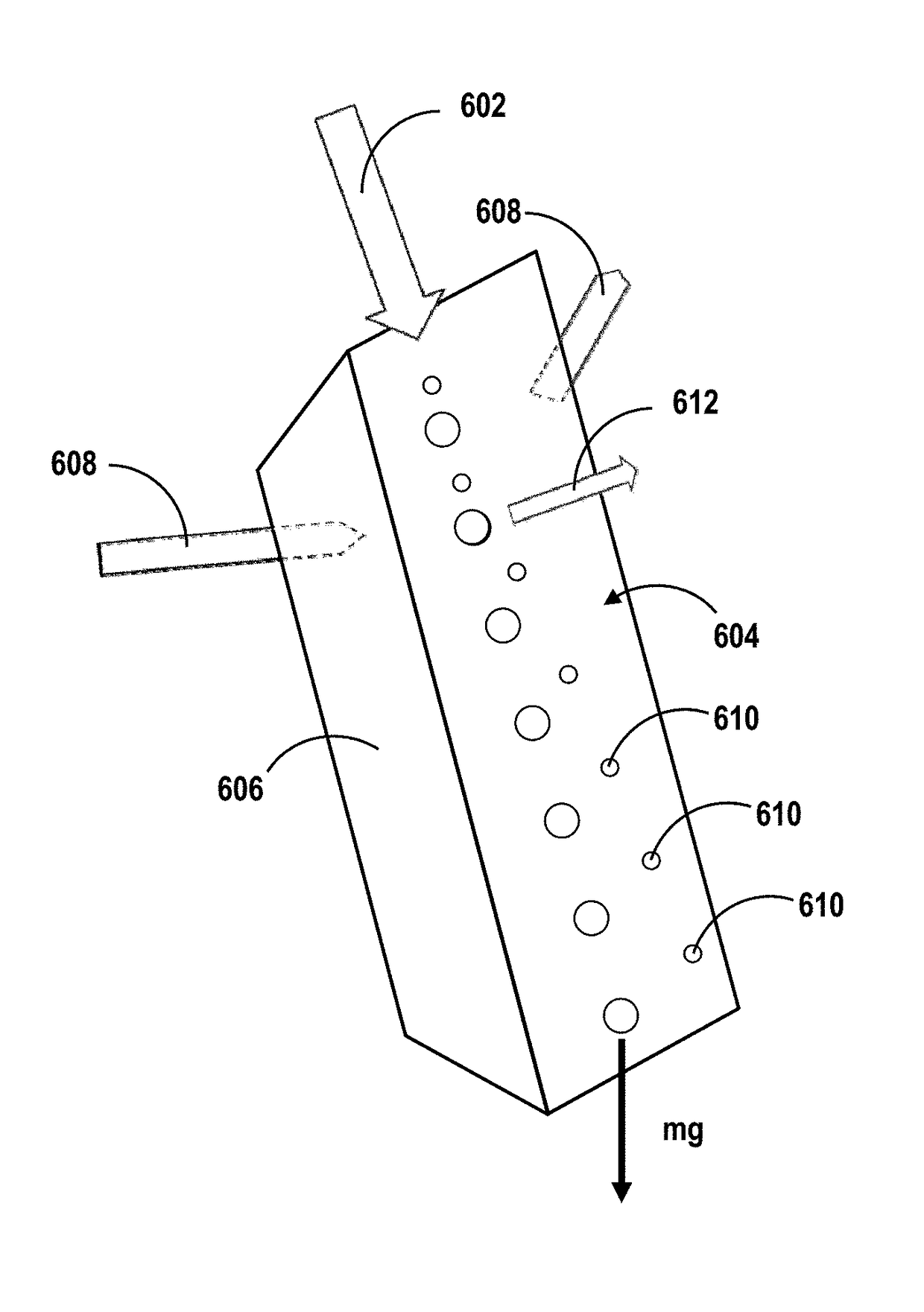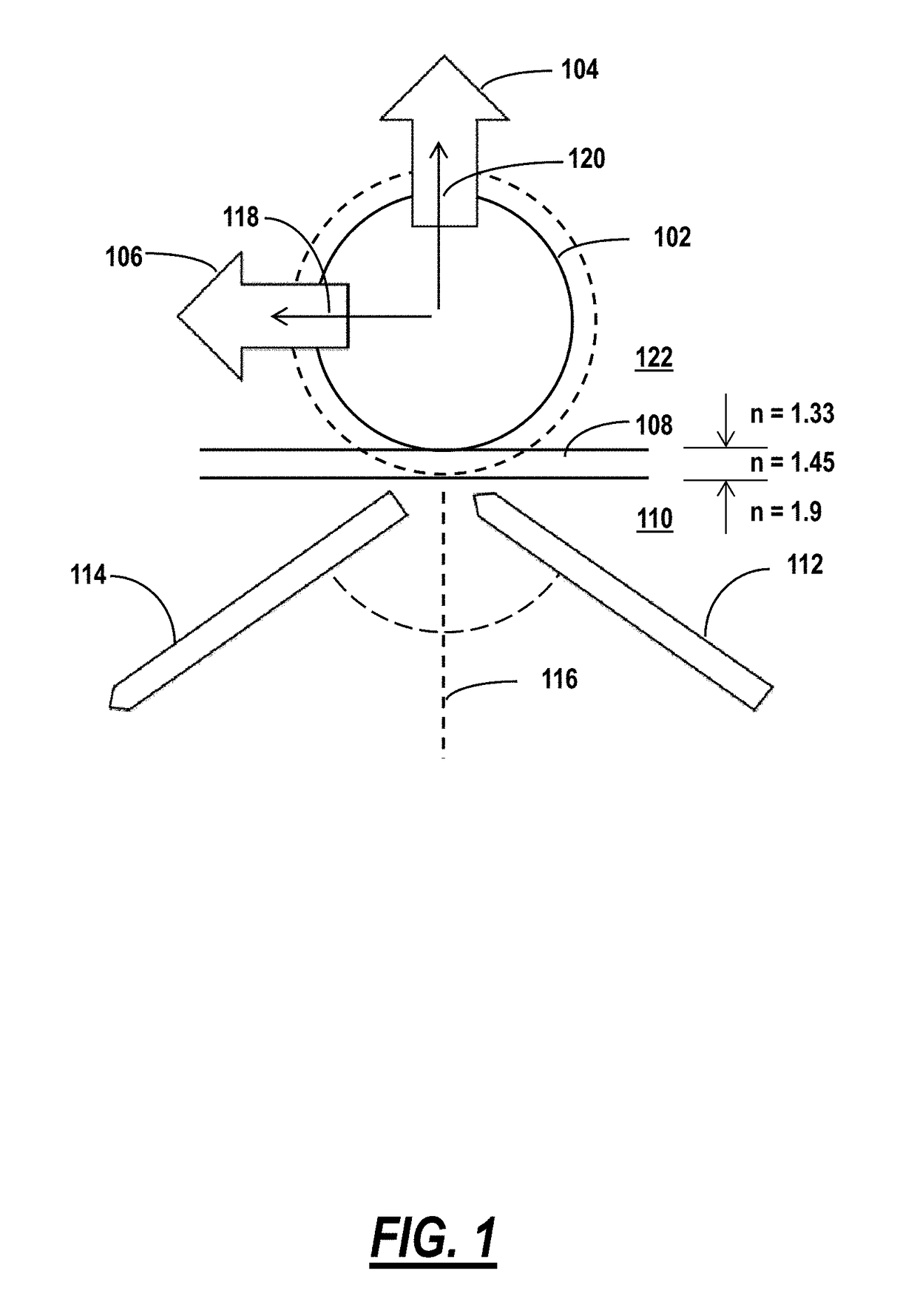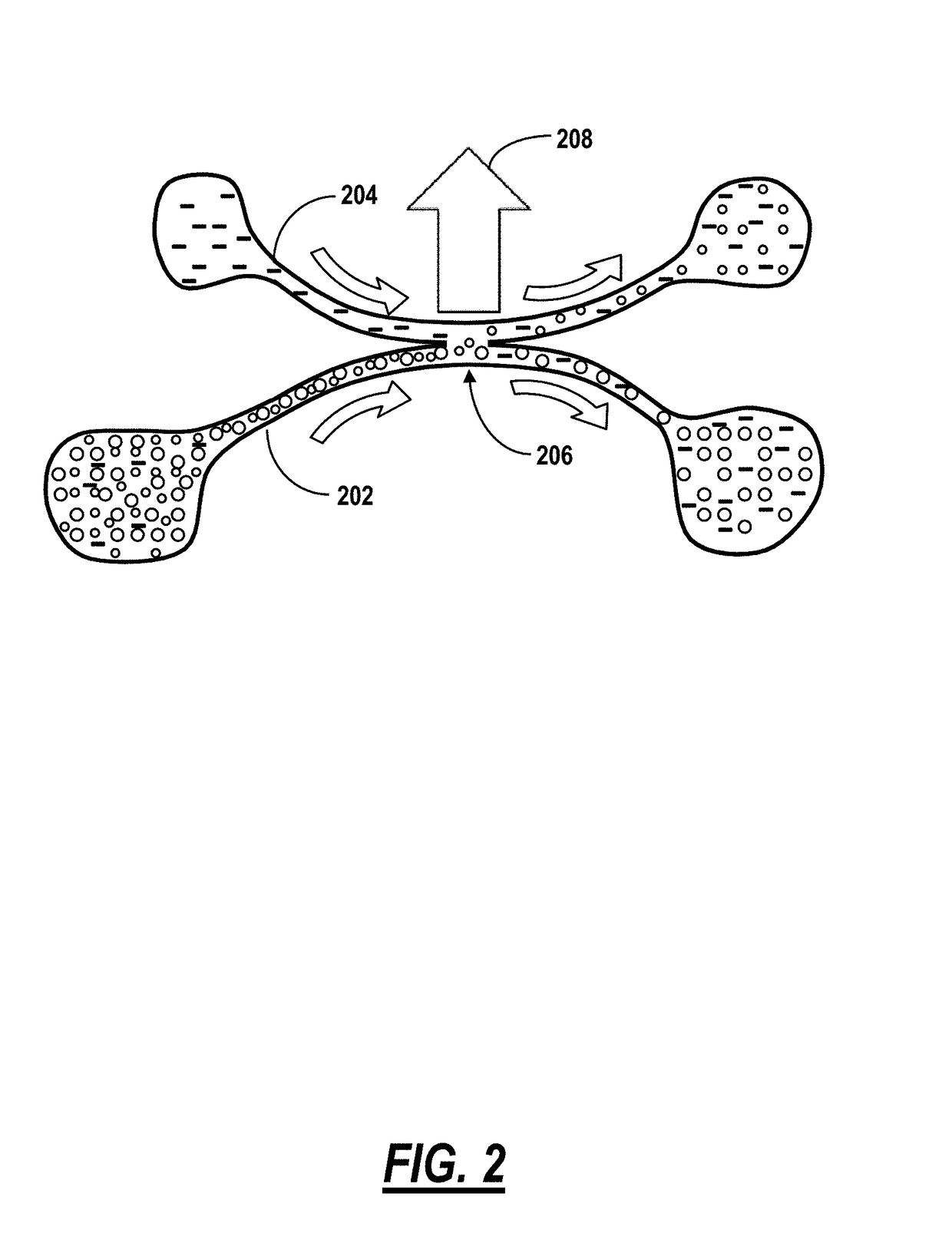Methods and devices for optical sorting of microspheres based on their resonant optical properties
a technology of resonant optical properties and optical sorting, applied in the field of article sorting systems and methods, can solve the problems of unproposed or developed practicable devices for sorting microspheres
- Summary
- Abstract
- Description
- Claims
- Application Information
AI Technical Summary
Benefits of technology
Problems solved by technology
Method used
Image
Examples
Embodiment Construction
[0019]In various embodiments, new methods and systems are provided for optically sorting microspheres with similar or spectrally overlapping WGM positions based on resonant light pressure effects. These effects occur in an evanescent optical field generated when light is confined, such as by total internal reflection, within the interior of an optical element such as a surface waveguide, a tapered microfiber, or a prism. When light is confined or reflects internally at an outer surface of the optical element, the evanescent optical field extends from the surface into a limited vicinity external to the optical element. Microspheres brought within the vicinity of the surface, where the evanescent field is present, are subjected to forces that result from a coupling of the evanescent field to WGM modes in the microspheres. Optical forces are advantageously resonantly enhanced when frequencies of provided light and WGM frequencies in the microspheres are matched according to advancement...
PUM
| Property | Measurement | Unit |
|---|---|---|
| propelling velocities | aaaaa | aaaaa |
| diameters | aaaaa | aaaaa |
| diameters | aaaaa | aaaaa |
Abstract
Description
Claims
Application Information
 Login to View More
Login to View More - R&D
- Intellectual Property
- Life Sciences
- Materials
- Tech Scout
- Unparalleled Data Quality
- Higher Quality Content
- 60% Fewer Hallucinations
Browse by: Latest US Patents, China's latest patents, Technical Efficacy Thesaurus, Application Domain, Technology Topic, Popular Technical Reports.
© 2025 PatSnap. All rights reserved.Legal|Privacy policy|Modern Slavery Act Transparency Statement|Sitemap|About US| Contact US: help@patsnap.com



